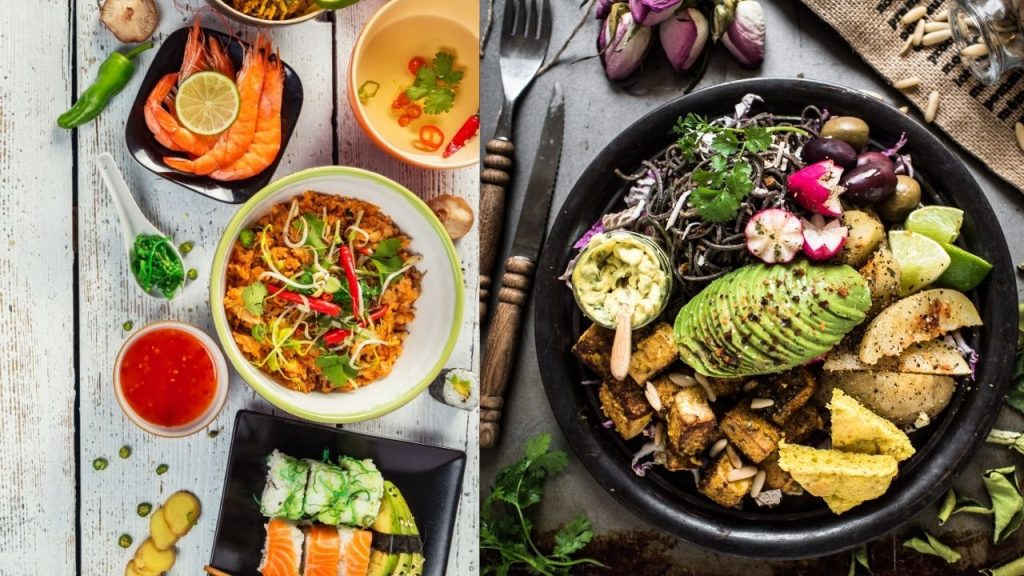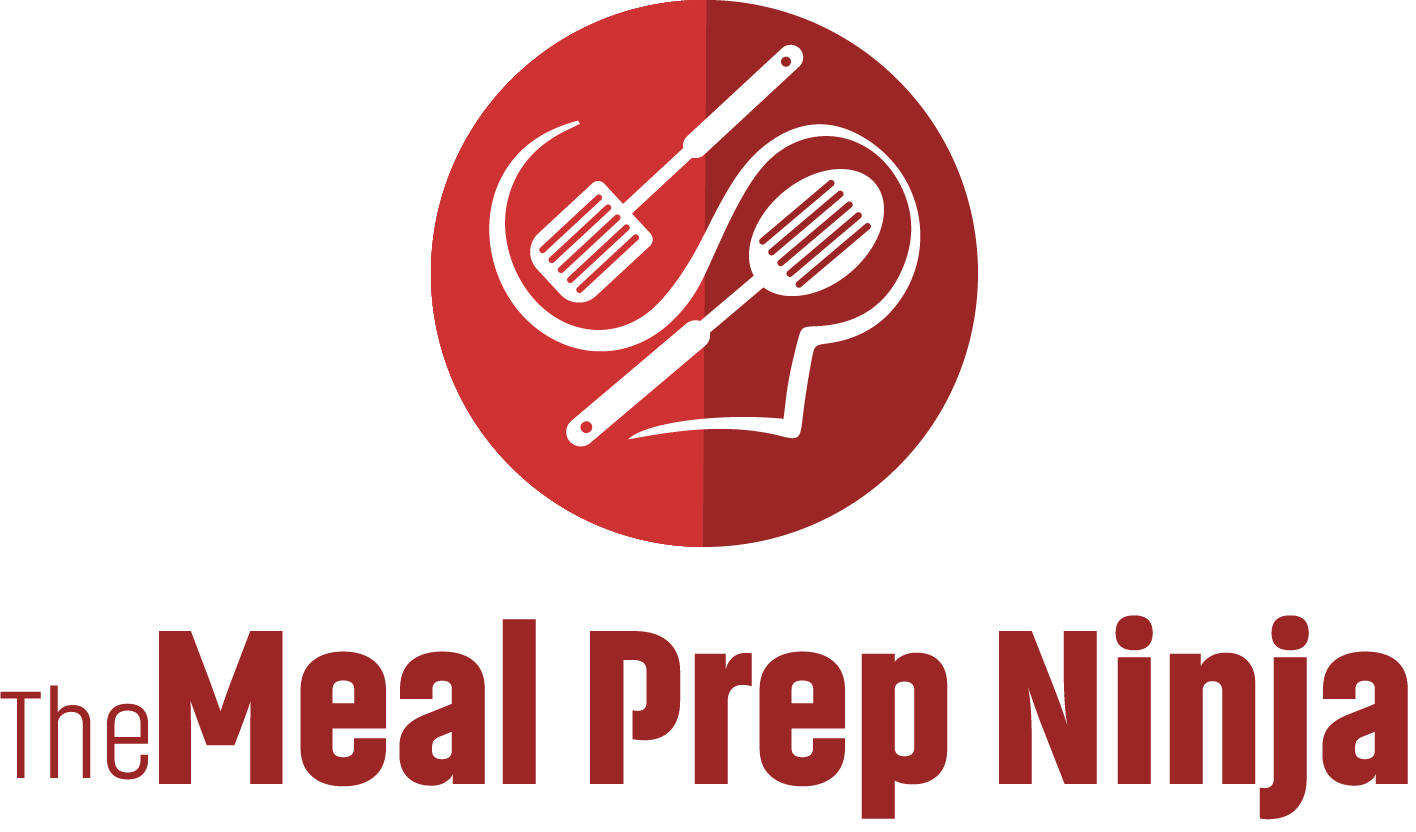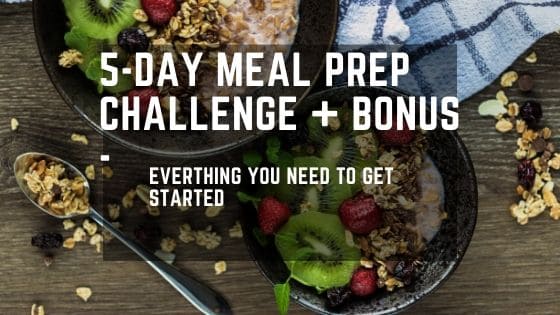Last Updated on December 3, 2020 by TheMealPrepNinja
What is Flexible Dieting?
Flexible Dieting is a popular diet that counts and tracks macronutrients to achieve your nutritional goals. Flexible dieting is popular because it gives you the flexibility to eat your favorite foods well still losing weight. It is also called If It Fits Your Macros (IIFYM) or Macro counting.
The increasing number of people scouring the net for healthy diet plans is quite impressive, if not alarming. Obesity, a common culprit, brings about other underlying health conditions such as blood pressure and diabetes, causing a mad rush among the populace in finding out healthy alternative options.
I know. Weight loss can be daunting and frustrating. Maybe you just don’t have the nerve to gym it out, and the misinformation that’s floating around isn’t helping much either.
In case you fall among the throng of such health-seeking individuals, you’ll agree with me that there is a myriad of healthy diet plans out there. It’s relatively easy to get overwhelmed with the options, and most probably, there’s a high chance that most of these diet plans are suspect. They won’t offer you pure gold as they profess.
Well, don’t throw in the towel yet. Maybe, or maybe not, you’ve heard of the term flexible dieting. As a health fanatic, I tend to go for plans that are simple and easy to follow. Easiness dramatically increases the chances of attaining your weight loss goals, and this is what flexible dieting offers. Dieting should not be a death sentence. So, what’s flexible dieting?
If It Fits Your Macros
It’s also known as If It Fits Your Macros(IIFYM) or Counting Macros. It’s simply a diet plan that tracks your body’s macronutrients( carbohydrates, fats, and proteins) to achieve one’s body composition goals. The notion behind this is that there are no bad “foods” as long as it fits within your body’s nutritional needs.
You can rest easy as you can now incorporate your favorite meals into your diet plan ( a reason why it’s gaining traction with weight loss seekers due to their continuous subscription)
The Working Behind Flexible Dieting
However, you should realize that your stomach doesn’t have a mind of its own. For those aiming to achieve weight loss, it’s all about the calories you take in and the calories burnt. You burn more than your intake to lose weight.
For the health nuts and clean eaters out there, it’s no longer a shocker. You can lose weight while eating your pasta, bread, and ice cream.
For the newbies, you should go slow and build up to other variations as you gradually progress. In some cases, your body may suffer from withdrawal symptoms, the more the reason to listen to your body. Flexible dieting aids you by promoting the feeling of never losing out on anything. By taking flexible dieting as an everyday new chapter into healthy living, you can accelerate your weight loss by coupling it with your exercise regimen.
By following such a diet, your macronutrients and caloric needs are calculated based on your weight-loss objectives. A dieter needs to determine their TDEE (total energy daily expenditure) and their required macronutrient needs before adopting flexible dieting. This is achievable through macro calculators available on numerous flexible dieting websites. You could also do it manually.
By now, you are probably wondering…
How Do I Start a Flexible Diet?
Well, it’s ain’t as easy as just waking up one morning and deciding that you want to embark on a flexible diet journey. It involves intricate and careful planning. The following is a step by step guide to outlines what to do;
Calculating Your Macros
As always, you need to know your energy requirements and expenditure (TDEE). Here is my Macro Calorie Calculator By The Meal Prep Ninja. This calculator will help you find out your TDEE. Consuming your bodily requirements per your calculation help maintain your body weight and a good starting point for you to figure out the ropes of tracking.
You can consume more than your TDEE if you aim at building muscles. Otherwise, slightly consume less if you aim at cutting down on your body fat. Your TDEE will determine the macros’ ratios required to make up the calories you’ll consume on the daily.

Get Your Tools Ready
The only thing that’s required here is a weighing scale, nothing fancy. A simple kitchen scale does the job. It comes in handy since you’ll be using it to weigh out your portions before consuming them. Initially, it’s a daunting task, but as you progress, you’ll get the hang of it. Planning and prepping up what you eat beforehand will definitely come in handy.

Get The App- A whole range of fitness apps are out there to aid you in tracking your macros. You can download one on your phone or register on their website. Apps such as My Fitness Pal premium version comes with other extended features and benefits pegged at $11 monthly, though you could still use its free version. The premium version offers one the ability to set up your daily macronutrient goals for the week without changing them.
Set Up Your Fitness App- you’ve downloaded and registered your fitness app, you’ll need to set up your account to get started. This is where you key in or enter your macros calculated in step 1 on the macronutrient or the calorie goal section. Different apps come with different menus, but it shouldn’t be challenging to figure it out.
Measure- At this point, key in your initial body weight, take photos, and measure various body parts such as your waist, hips, and chest. Alternatively, you could create a spreadsheet to keep track. Get your daily weight, taking photos every week.
Start Tracking Your Macros- Take a few days to consume as you usually would, keying everything into your fitness app. It gives you a better idea of where you are and what your current diet looks like. Once you have the general picture, it should be reasonably easy to make the necessary adjustments in reaching your macro goals.
If weighing yourself poses challenges, just focus your energy on maintaining your macros and how your clothes fit. It’s essential to note that progress varies depending on the individual. However, don’t lose hope if the scales don’t tip in your favor. Just keep going on.
Educate Yourself- The more you empower yourself about nutrition, macronutrients, and training, the more evident your chances of success will be. The more you understand the whys and hows of what you are doing, the more successful you’ll be in achieving your goals, not to mention your dedication to your plan.
You now have the necessary tools at hand. The pertinent question remains…
How Do I Track My Macros?
In simple terms, take macros as a daily limit range that allows you to neither surpass nor go below your daily calories. To figure out whether the numbers are working out for you, limit your daily intake to +/- 5 grams. Since tracking your macros on a trial and error basis, you’ll frequently have to measure and adjust your values to arrive at a figure that’s crucial to attaining your goals. Let’s look at how to figure all this out?
First off, you need to calculate to know what your Basal Metabolic Rate (BMR) and TDEE are
BMR: The number of calories your body burns when at rest.
TDEE: Calories burnt by your body, taking into account all activities and exercises.
Once you arrive at your TDEE, you can quickly arrive at your macro’s ratios, depending on your goals. You have to be on a calorie deficient diet (below your TDEE) to lose weight. You’ll have to consume a diet with higher calories than your TDEE to build muscles.
Having attained your caloric limit, it’s now much easier break it up into each macro as follows;
Carbohydrates translating to 45-56% of the total calories (carbs=4 cal/gram)
Proteins, comprising of 10-35% of total calories (Proteins = 4cal/gram)
Fats, making up 20-35% f total calories (Fats=9cal/gram)
NB. You should test the numbers for 2-4 weeks and make relevant adjustments accordingly to ensure you attain the needed weight loss.
Benefits of Flexible Dieting
A vast majority of people ranging from nutritionists to fitness instructors, actively embrace flexible diets due to their advantages and tangible outcomes. The following are just some of the few benefits that accrue;
No Food is off Limits
I had to place it first since it’s the most obvious advantage. You can now satisfy your cravings without the need to feel guilty. You can now have your pancakes, fries, full-fat beef, but before that, you have to make sure that your macro goals are met or are in line to be achieved either later or before the day ends.
Easy To Follow
The only challenging bit about such a diet regimen is calculating one’s calorie and macronutrient requirements. For some, this can be outrightly daunting and intimidating. Beyond that, the diet itself is easy to follow with no complicated diet recipes or food plans.
Long Term Weight Retention
Stricter diets tend to have a negative psychological effect on those who follow it. For such participants, the chances of putting on more weight are relatively high since they don’t have the option of enjoying the flexibility that comes with flexible dieting. On the other hand, diet flexibility encourages long term weight retention.
Flexibility
No more worries when attending parties and family gatherings where the food served is out of your bodybuilding norm. Further, you won’t have to prep up by preparing a week’s worth of meals to be eaten at certain times of the day. In fact, you don’t even need to carry food since you could hit your macros at any time of day. You can have whatever you desire at any time of day.
Apart from being oddly different and being judged, it also works, among other endless lists of benefits.
Despite the outlined benefits, some still question the legitimacy of flexible dieting and whether it’s healthy.
Is a Flexible Diet Healthy?
Those who’ve had strict diet regimens believe or to think that some foods are either good or bad. For instance, a combination of chicken and rice typically resembles a healthy diet compared to lollies and ice cream. It’s important to note that a calorie is a calorie. There’s no such thing as a healthy or an unhealthy calorie.
It’s a sad state of affairs when people get the notion that one can either lose or gain weight only through clean eating. As a matter of fact, a flexible diet is a healthier alternative, exhibiting long term effects compared to other strict dietary plans- you don’t have to suffer from psychological effects and cravings that come with strict nutritional plans, not to mention feeling odd or getting judged. Such can hamper your weight loss efforts.
N.B Despite flexible dieting being more open to consuming other foods, it’s vital to apply discipline and restraint to a certain level.
While it isn’t a dietary sin to indulge in your favorite treat such as pastry, sugary drinks, alcohol ( particularly beer), candy bars, and fries, among many others, one should exercise restraint not to take them in large quantities. It’s known that the worst culprits when it comes to weight loss are junk food packed with added fats, sugars, salts, and refined wheat.
Flexible Dieting Books
There are many books on the market that go in-depth on flexible dieting and macro counting. These books show you how to stop counting calories and transform your body while eating all the foods you love. This article gives you an overview but if you want to learn more I recommend checking out one of these books.
Flexible Dieting Lifestyle’s Greatest Hits

The Everything Guide to Macronutrients: The Flexible Eating Plan for Losing Fat and Getting Lean


Flexible Dieting Recipes
Here are a few great recipes to get started with flexible dieting. Every recipe on this website has macronutrient information in the description.
Healthy Burrito Bowl Meal Prep Ground Chicken Recipe
Slow Cooker Olive Garden Chicken Pasta
If you want more healthy macro friendly recipes, go over and SUBSCRIBE to my Jim The Meal Prep Ninja YouTube channel.
Here is one of my favorite recipes:
Final Thoughts
Flexible dieting is the new kid on the block, revolutionizing the way people lose weight, and at the same time enjoying themselves in the process. Further, it creates a positive relationship with food, plus you could eat on the go. However, to ensure that you stay healthy, self-control and discipline are crucial. Keep junk to the minimum, and see the wonders of self dieting unfold before your eyes.
I personally follow a flexible diet. All of the recipes in this blog are made to be healthy and also macro-friendly. Tracking my macros gives me the ability to eat the foods I enjoy without having to remove the foods I love. I like to create healthy versions of my favorite foods so that I can eat more volume throughout the day.


Jim Lopez, the founder and editor of The Meal Prep Ninja, shares his journey from a passionate bodybuilder and fitness enthusiast to a certified nutrition coach. Certified by Precision Nutrition, Jim aims to empower others with knowledge on meal prep and nutrition, offering resources for busy individuals to enjoy low-calorie, tasty foods. His blog is a community for sharing healthy eating habits and meal prep recipes



